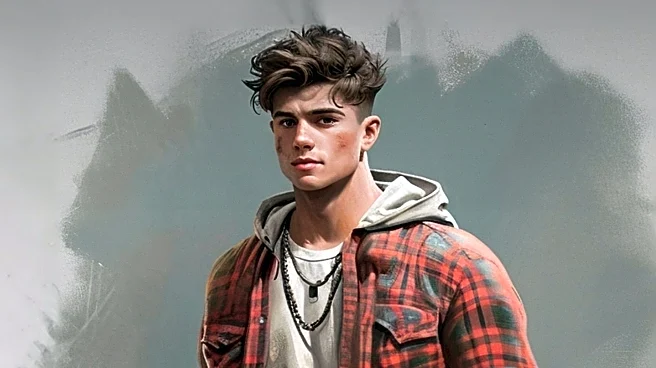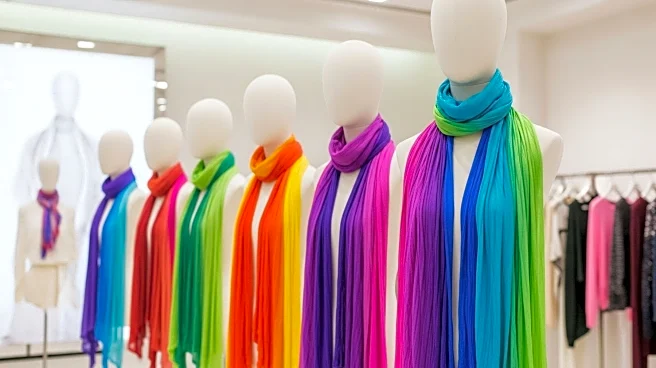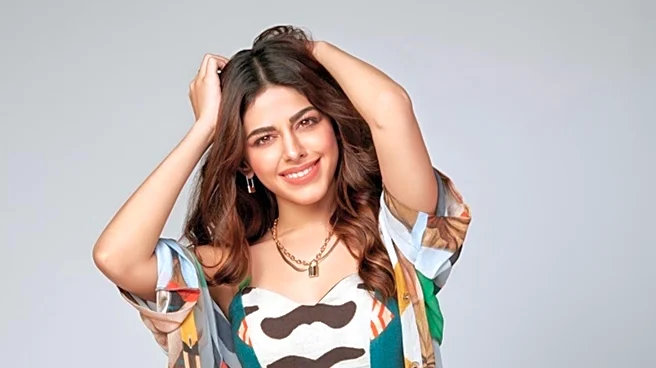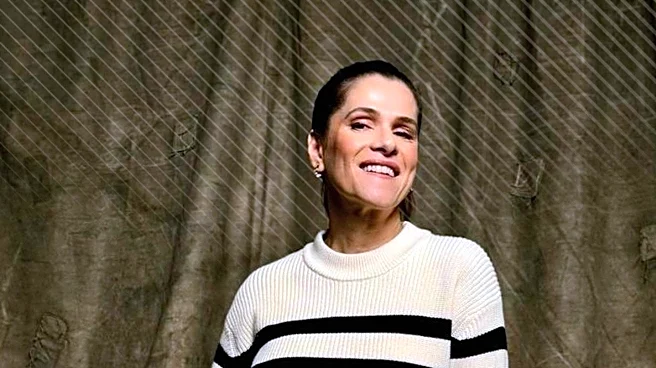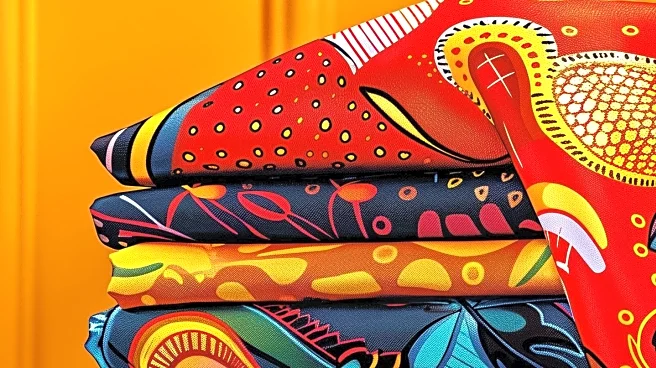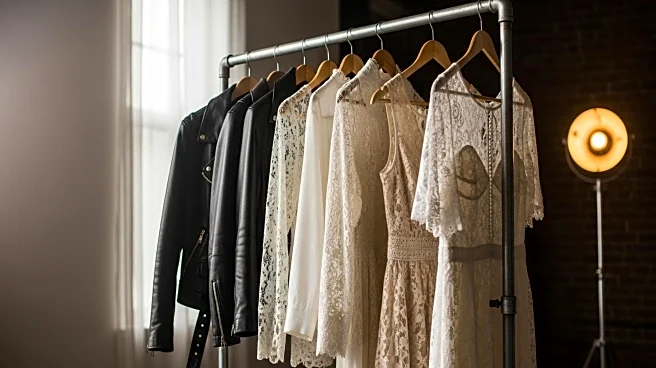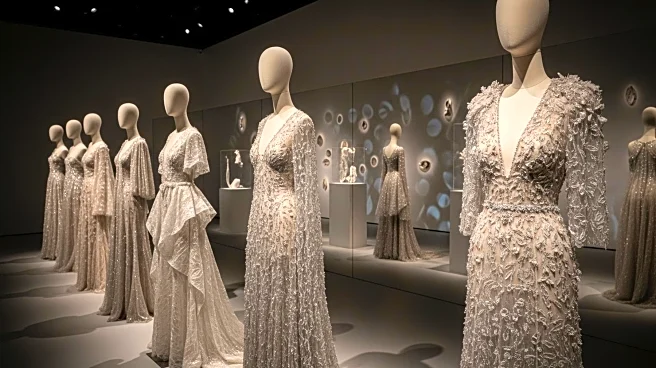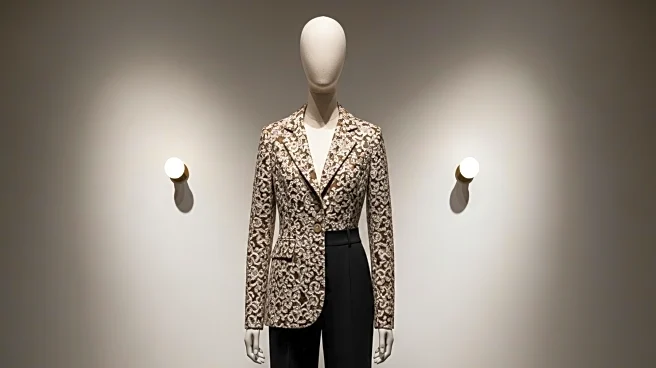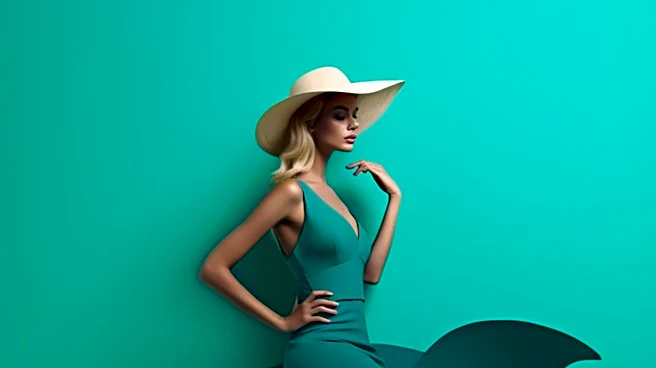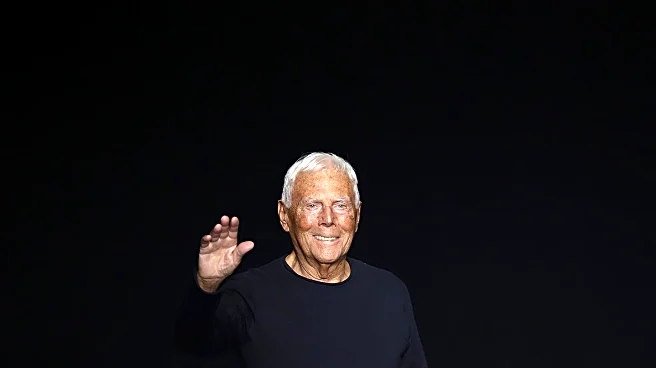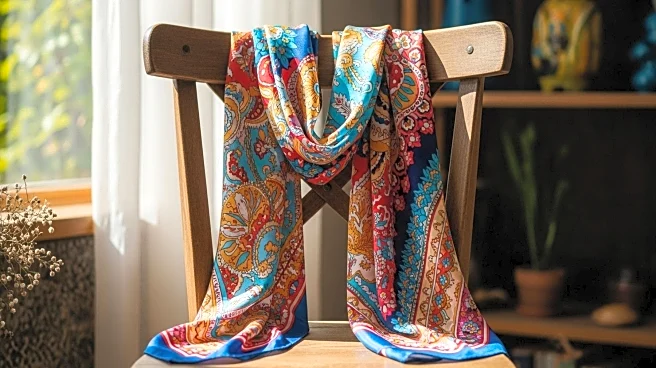What's Happening?
Chris Leba, the designer behind R13, has introduced his Spring 2026 Ready-to-Wear collection, focusing on innovative fashion drops. This season, Leba has opted to split his collections into monthly deliveries, allowing for a continuous flow of new items for consumers. The collection features a romantic twist on his punk aesthetic, with a focus on paisley bandanas used in various creative ways, such as wrap-around tops and printed knits. The lineup also includes vibrant colors and patterns, like leopard print jackets and acid green houndstooth trousers, inspired by Stephen Sprouse. Leba's collection balances bold colors with more subdued black and white pieces, featuring cartoon-like embroidered faces on knits and shirts.
Why It's Important?
The decision to split collections into monthly drops reflects a shift in fashion industry practices, aiming to maintain consumer interest and adapt to changing market demands. This approach allows designers like Leba to explore different themes and styles within a single season, offering consumers a diverse range of options. The collection's emphasis on hand-crafted elements, such as embroidered designs, highlights a growing trend towards personalized and artisanal fashion, contrasting with the increasing use of technology in design processes. This balance between innovation and tradition could influence future fashion trends and consumer preferences.
What's Next?
As the fashion industry continues to evolve, designers may increasingly adopt similar strategies to maintain consumer engagement and adapt to fast-paced market changes. The success of Leba's collection could encourage other designers to explore monthly drops and thematic diversity within their collections. Additionally, the focus on hand-crafted elements may inspire a resurgence of artisanal techniques in fashion design, appealing to consumers seeking unique and personalized items.
Beyond the Headlines
Leba's use of AI in previous lookbooks and his current focus on hand-crafted designs suggest a broader conversation about the role of technology in fashion. As designers navigate the balance between digital innovation and traditional craftsmanship, the industry may see a shift towards integrating both elements to create unique and compelling collections. This trend could lead to new collaborations between tech companies and fashion designers, exploring the potential of AI and other technologies in enhancing design processes.
